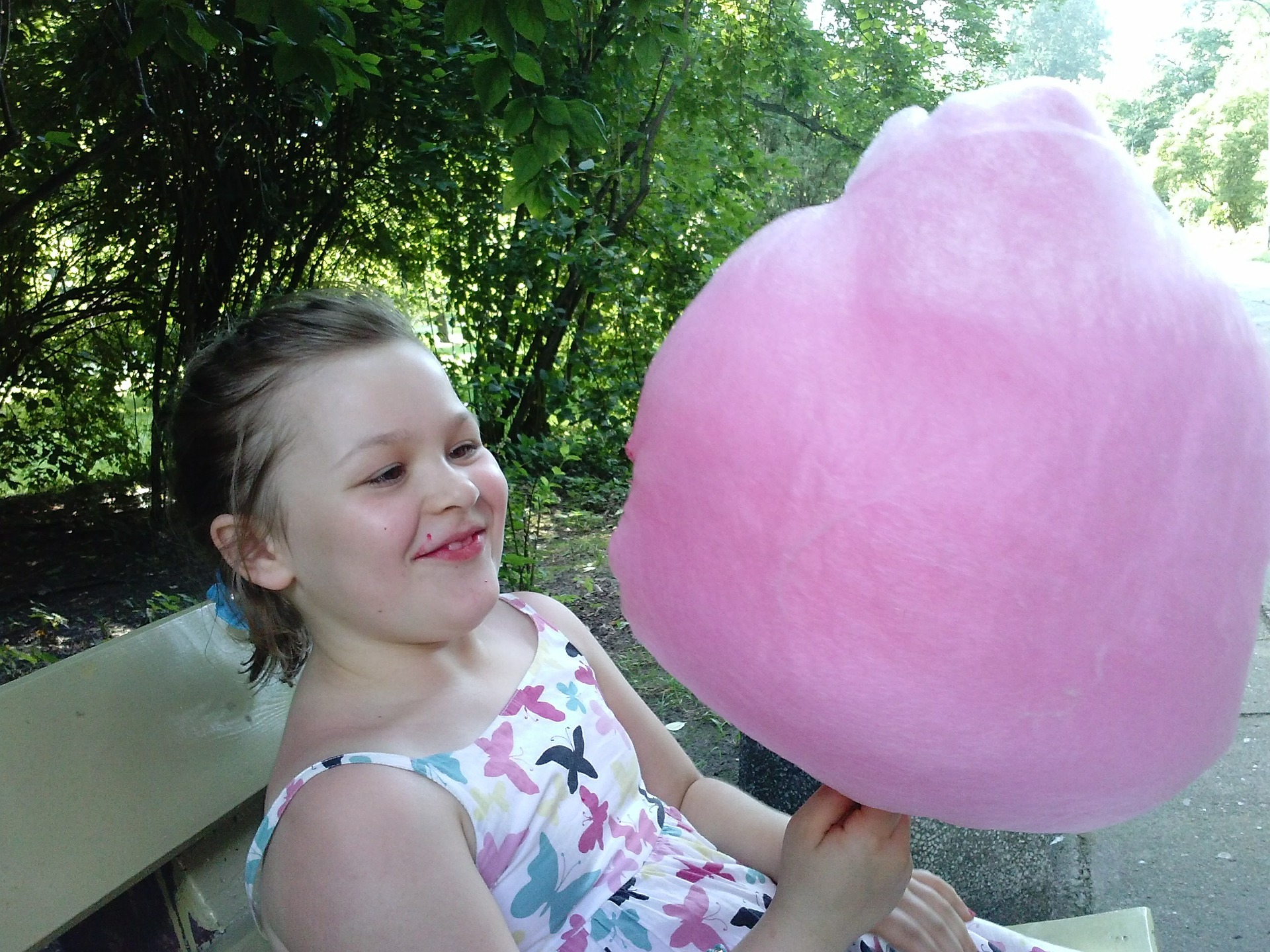If you’ve been to a county fair or carnival yet this summer, you may have had this sugar-spun sweet.
Four people are said to have invented cotton candy – and two of them are dentists.
Definition: a fluffy, sweet confection whipped from spun sugar and gathered or wound around a stick or cone-shaped paper.
Although cotton candy was technically not invented until the late 1800s, early 1900s, the the act of spinning sugar has been around since the 1400s, in Italy.
The process was quite labor intensive: Cooks had to use a fork to separate melted sugar into individual, fine strands. These strands would then be draped over a bowl or similar object, to form a “web.” Next, it was woven around a piece of cardboard cone. The dessert could then be consumed after drying.
Consequently, the time consuming spun sugar was typically enjoyed only by the wealthy.
There are four people credited with the creation of cotton candy: William Morrison, John C. Wharton, Thomas Patton, Josef Delarose Lascaux.
Two separate cotton candy machines were patented during 1899 and 1900.
In 1899, dentist William Morrison teamed up with candy-maker John C. Wharton to come up with an electrical machine. This contraption used centrifugal force to spin and melt sugar (and any flavoring or coloring) through small holes. The end result was not yet called cotton candy, but “Fairy Floss.”
In 1900, Thomas Patton was experimenting with caramelizing sugar. He used a gas-fired rotating plate to spin the sugar, and form threads of cotton candy with a fork. As Morrison and Wharton did, he too patented his creation.
Supposedly around the same time frame, another dentist by the name of Josef Delarose Lascaux is said to have introduced cotton candy to his dental practice; there was no patent associated with this claim. I think maybe people just like the idea of a dentist inventing cotton candy and had to throw one more in there.
Patton showcased his cotton candy treat at the Ringley Brothers Circus in 1900; Morrison and Wharton debuted their own cotton candy at the St. Louis World’s Fair in 1904.
Basically, Morrison and Wharton made a killing with their cotton candy – or Fairy Floss – machine. They sold the unique snack for 25 cents a box, and grossed $17,163.75 from that one fair; at the time, folks were making between $200 and $400 a year. In addition, sugar only cost 4 cents per pound.
In 1949, a cotton candy machine was developed with a spring base, this improving the process. In 1972, the cotton candy machine made another advancement: the automatic cotton candy machine. Now, the airy and sweet concoction could be mass produced.
Considering cotton candy made its debuts at a fair and a circus, it’s no wonder those are still the most common places to find the treat today. Although, they can be sold in commercially prepacked bags.

Comments
One response to “Food history: cotton candy”
hi, i am looking for cotton candy machine. can you guide me how many types you have?
together with the price and if possible with the photographs pls…